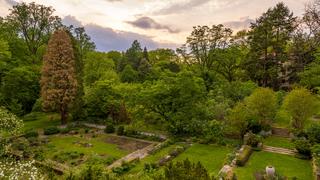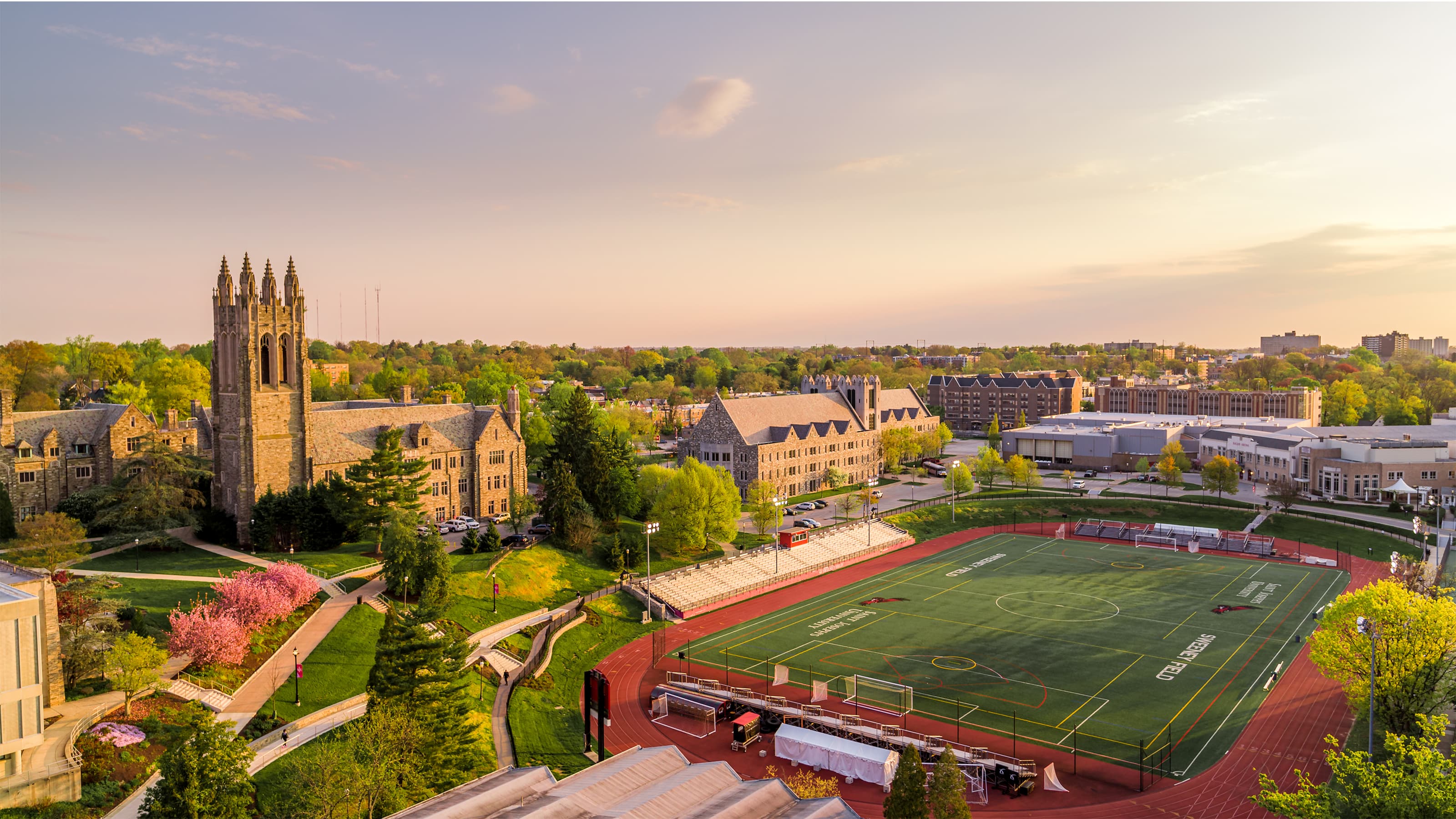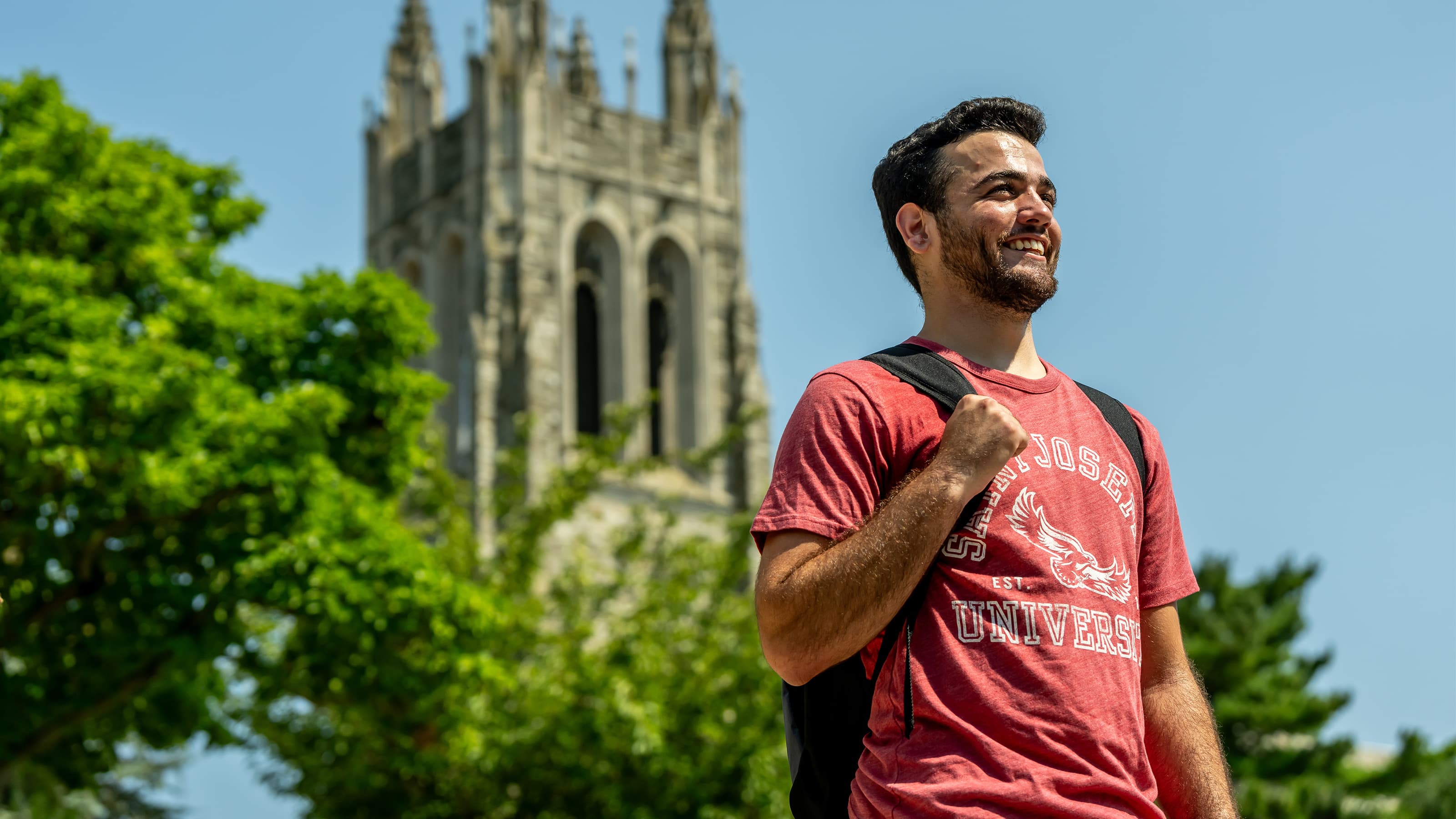Undergraduate Studies Climate Change Through Greenery and Greenhouse Gasses
For her Summer Scholars project, biology major Celine Beltran, BS ’25, studied tree rings to determine how climate change impacts the vegetation around Saint Joseph’s University.

With the goal of sharing knowledge about climate change and its impacts, Celine Beltran, BS ’25, spent her summer among the stands of trees at the Barnes Arboretum at Saint Joseph’s University.
The biology major, alongside classmates and a faculty mentor, studied the patterns of annual growth rings to build on a dataset of how native and non-native trees found in the arboretum respond to climate change.
The ongoing project is Beltran’s chosen Summer Scholars Program research. For Beltran, who is on a biomedical track and has a psychology minor, the project was an opportunity to learn more about the environment.
“I wanted to improve my knowledge in the name of climate change,” Beltran says. “We tend to see it as such a dark hole, because there’s so much that’s being impacted.”
The arboretum’s director, Clint Springer, PhD, associate professor of biology and director of the Institute for Environmental Stewardship, studies how plants respond to climate change. As Beltran’s faculty mentor, he provided an existing dataset on native and non-native trees and led her in collecting samples to add to it.
Understanding how much carbon is stored on campus is important in understanding our campus greenhouse gas footprint.
Clint Springer, PhD
Associate Professor of biology and Director of the Institute for Environmental StewardshipSpringer says that urban environments are not often part of these types of studies because urban trees trend younger. However, the Barnes Arboretum at Saint Joseph’s University houses some trees that date back 100 years.
“We have a long-term dataset, which is kind of hard to find in and around an urban environment like this,” he says. “We’re adding to our body of knowledge, which is really important and will strengthen our understanding of how forests have responded, and how we might expect them to respond as [climate change] continues into the future.”
So far, Springer and Beltran have found very little difference in the response of non-native and native tree species over the last hundred years of climate change.
“This is not necessarily surprising because most of our non-native tree species originate from places in Asia that have a similar temperate climate to that found here in Philadelphia,” Springer says.
That finding, while pending further analysis, is useful in planning for the arboretum’s future, he says.
The project is also relevant as Saint Joseph’s joined the Pope’s Laudato Si’ sustainability initiative this summer. Laudato Si’, a Latin term meaning “Praised Be,” calls on Catholic institutions to protect the earth in part through environmental stewardship and education.
In terms of environmental stewardship, Beltran, in her analysis, will be able to compare her tree ring samples to previous collections, including their carbon content.
“We can use this data as we start to think about our campus climate commitment that we've just signed on to,” Springer says. “Understanding how much carbon is stored on campus is important in understanding our campus greenhouse gas footprint. Having carbon stocks in trees and undisturbed soils improves our campus' functional emission numbers as the trees actively remove excess carbon from the atmosphere, which harms the climate system.”
On the education side, once Beltran and her collaborators complete their analysis of the data later this year, Springer says he plans to spread the word about their findings through signage in the arboretum about the project. They'll also conduct outreach to the broader University community to make people more aware of the arboretum, which provides a natural experience within its suburban surroundings. Springer says education in the arboretum will highlight the importance of mature trees in combating climate change.
Beltran echoes Springer’s sentiment about spreading knowledge.
“I think that the more people know about climate change, the more we can actually make an impact in changing that,” she says.
For Beltran, manually extracting tree samples using an increment borer instrument not only gave her a better upper arm working than she would’ve gotten in the gym, she jokes, but the experience was also empowering, she says.
“Several times, people came up to us and asked, ‘How are you doing that into a tree?’” Beltran says. “We would explain it to them and then explain why we’re doing that. I think that’s the most surprising part, is that I was able to physically do it myself, and I felt more connected to it.”



